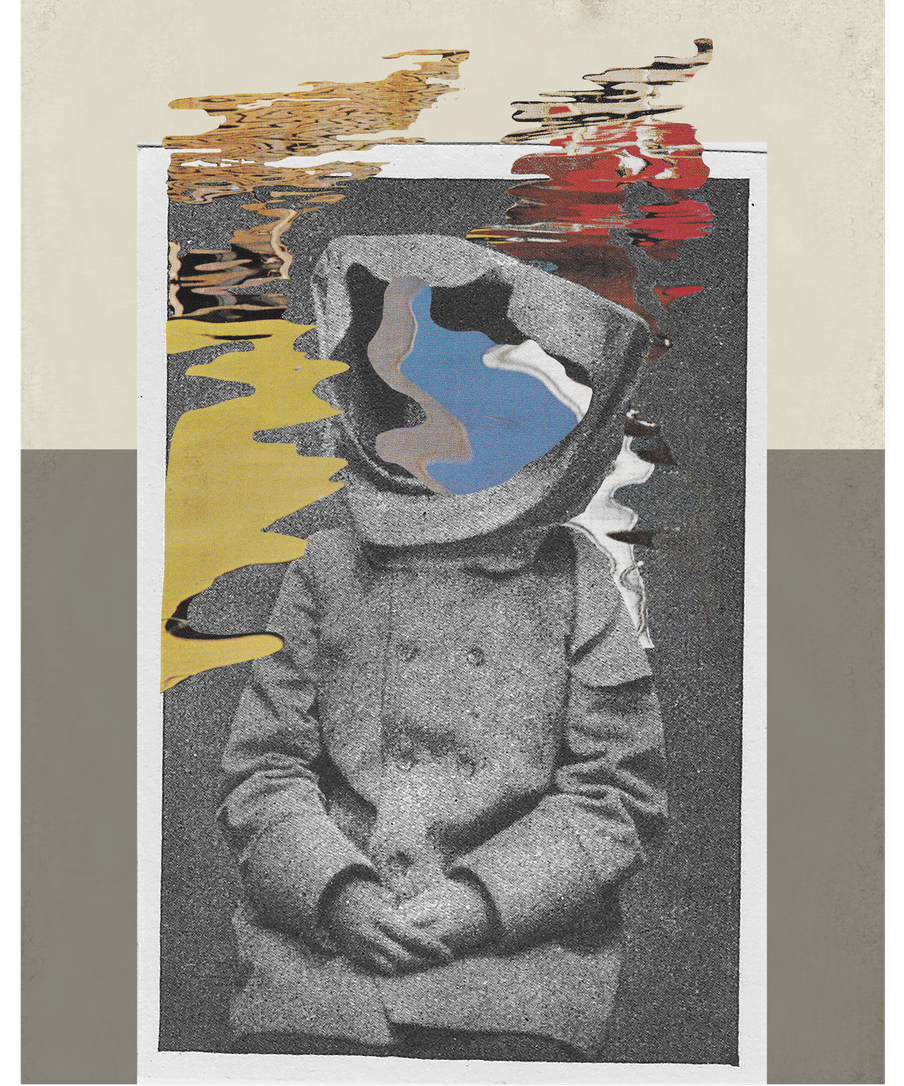I fell in love with Sylvia Plath when I was 14, which is about as conventional as you can get for a depressed teenage girl who delighted in believing that she’s unconventional. It wasn’t her writing that I fell for – that would come later – as much as it was just her whole self, or at least what I projected on to that self, an imagined embodiment of all my seething sadness and anger. She was beautiful, she had daddy issues, and she was famous for being dead.
I didn’t have the nuance to understand how her suicide had been commodified and glamourised, and if I’m being honest, her death was what fascinated me. What an utter rejection of the world! I might not have understood yet whether her writing was good or not, but I knew pain. I knew what she meant when she wrote in her journal about “the simple way out of all those little brick dead ends we scratch our nails against”. I needed someone to see myself in, and Sylvia Plath gave me that.
Read this story in a minute.
“Representation matters” gets repeated so often that some people are no doubt tired of hearing about it, but it’s no less true for that. We need to see versions of our identities in our workplaces, leadership and media, not just out of a sense of solidarity or some nebulous proof that we too can “make it”, but also as a validation that we exist and have the right to that existence. Who are you going to grow up to be if, to put it baldly, you’ve never seen evidence that anyone like you grows up to have a job, or a family, or a life that feels meaningful to them? When I was younger, I hungered particularly to see people with mental illness in history – I wanted mad ancestors, people from history who I could feel some kind of kinship with. I still do.

Why looking for historical representations of mental illness is difficult
Looking for historical representation of mental illness can be tricky. Not only are the symptoms mostly invisible, but the people themselves are often erased from the narrative, hidden away in institutions or family homes, their conditions discussed either with euphemisms or not at all. When their stories do get told, the tone is often farcical or voyeuristic, either laughing at their behaviour or revelling in the other-ness of it. When they aren’t being ridiculed, the subjects of these narratives are pitied, their lives presented as tragedies. All of these are forms of dehumanisation, although the latter might be less obviously so. When people’s lives are represented through a single lens – as tragic, triumphant, inspirational, and so on – they’re reduced to tropes and aren’t granted the full breadth of their personhood.
Another difficulty is that while what we now call mental illness has existed for all of recorded history, the term itself is a new one and it is both difficult and problematic to try to diagnose people in retrospect. We can only rely on versions of the story that are often biased or incomplete, and the information available often has to be massaged into something else in order to fit a disorder outlined in the DSM. There’s also the problem that various behaviours have been pathologised at various times and places – conditions that might have been termed madness or mental disturbances in some eras would be understood differently in others. Someone experiencing consistent low moods or delusions or hallucinations after giving birth might in some eras be considered to have a spiritual illness or imbalance of humours, whereas now they would be understood to be suffering from some kind of postpartum psychiatric disorder.
But we also can’t just apply the way we understand the world today onto the past. As tempting as it is to read a Wikipedia article about Vincent van Gogh and decide that his symptoms obviously align with, say, bipolar disorder, that’s not necessarily useful, accurate, or helpful and does more to obscure than illuminate. The cultural context of how someone understood their madness – and how people around them reacted to it – is important. On the other hand, what we can do is look at van Gogh and say that he obviously did suffer from some kind of mental disorder, and the symptoms he had influenced how he lived, worked and died. It is a fine line between looking for ancestors and evaluating them in ahistoric ways.
Rethinking the ‘madness’ of King George
One more thorny aspect of looking for mad ancestors is the why of it. If mental illness is indeed an illness, a form of dysfunction, then why go looking for people who have lived with it in order to celebrate them? For some, the answer to that question is that it’s not an illness at all, just a different mode of being in the world, one that if accommodated properly wouldn’t cause dysfunction at all. I agree with that argument to an extent – a lot of the misery that accompanies mental illness is inflicted from the outside world in various ways, through lack of services, systemic trauma, the perception that differences in behaviour are frightening and should be pathologised, and so on – but my own experience is that much of my suffering is internally generated. So, again, some might wonder: why celebrate it? Especially if I’m against the idea of turning these lives into inspiration stories? But it’s less celebrating than wanting to see how others like me managed to navigate the world.
So, where to begin looking? Unsurprisingly, the most obvious and fully described cases are in royalty or other prominent people. For better or worse, when asked about mental illness and history, many of us in the English-speaking west will immediately think of King George III. There are multiple reasons for this. In the US, there’s the pseudo-patriotic mythology that has built up around his illness and the war for independence. There’s also Nicholas Hytner’s play-turned-film the Madness of King George, which still enjoys popular revivals. And of course, George was king during a period in British history that saw much upheaval and change. When it comes to his mental illness, George’s case is fascinating, although possibly not for the reasons you might think.
George III had one of the longest reigns of any British monarch, beaten only by Victoria and Elizabeth II. Rumours would later spread that he had been mentally “feeble” his entire life and hadn’t learned to read or write until he was 10 years old, but in reality, his educational milestones fell well within the borders of typical. As far as we know, he was mentally healthy until his mid-50s, a decade after the US had won its independence. His illness began with physical symptoms, including stomach pain and digestive problems, but later progressed to include delusions, hallucinations and paranoia. One shocking detail that’s widely shared is that he foamed at the mouth like a mad dog, but that isn’t quite an accurate description. What actually happened was that when he was experiencing racing thoughts, he spoke so quickly in an effort to articulate them that his saliva sometimes spilled out of his mouth in a foam.

George’s doctors at first tried to conceal his illness from the public, but that soon became impossible. Eventually, he came under the care of a renowned doctor from a private institution, Dr Francis Willis, who treated the king as he would any other patient, even putting him in a straitjacket when he did not obey Willis. What is most remarkable is that the king did make a full recovery, possibly in spite of Dr Willis’ care. He would go on to have several more bouts of this illness throughout his life, but recovered from all of them, except the final one.
Although US Americans love to paint him as a widely hated man, driven mad with power, whose behaviour forced the hand of the US rebellion, George was quite beloved at home. Each time he appeared in public after recovering from yet another round of illness, he was met by huge cheering crowds and spontaneous outbreaks of people singing God Save the King.
There have been a few people who have tried to retrospectively diagnose George with physical illnesses that would explain his psychiatric symptoms, but absent any proof, they remain guesses. There’s also a whiff of ableism around these theories, a desire for the king to have had a more socially acceptable physical illness rather than a mental one. We struggle to take George’s story at face value, that of a man who suffered intermittently from mental illness, yet had a largely successful reign and happy life. These things contradict the narratives we hold about mental illness: that it is a curse, that it ruins lives, that its deviance from the norm should not be tolerated.
The true history of Joanna of Castile
George was far from being the only monarch to live with mental illness. Another famous example is Joanna of Castile, also known as Joanna the Mad, although you might know her better as the third child of the famous Ferdinand and Isabella, not to mention sister to Henry VIII’s first wife, Catherine of Aragon.

Joanna was said to be an intelligent child and a good student, although prone to moodiness and solitude. At the age of 17, she married a member of the Habsburg dynasty nicknamed Philip the Handsome (although his handsomeness is ... debatable). Joanna was wildly in love with Philip, but he was unfaithful to her throughout their marriage and their relationship was often fraught. Joanna began to experience bigger mood swings and exhibited seemingly inappropriate behaviour shortly after the death of her two older siblings, a string of losses that placed her as heir to her mother’s kingdom of Castile. Joanna would cry and injure herself during periods of intense distress, and in reaction to this, Philip spent more and more time with his mistresses, which naturally turned up the volume on Joanna’s emotions.
When Queen Isabella fell ill, Joanna stopped eating and sleeping, and her erratic behaviour increased. Philip, apparently too handsome to handle any of this, left Spain to return to his home country of Flanders. Joanna wanted to follow him, even though she was heavily pregnant and the journey would have involved travelling through dangerous territory, but Isabella stopped her and had her locked up. Deprived of her freedom, her health deteriorated and she began speaking what seemed to be gibberish. Shortly after giving birth, Juana begged once more to be allowed to go to Flanders. When her family again tried to stop her, she left the castle half-dressed and began flinging her body at the locked gates. Finally, about a year later, her parents permitted her to travel to join her husband.
Who would Joanna have been without the burden of an unfaithful, unkind husband and a usurping father?
Things continued to go downhill for Joanna: her mother died from her long illness, and then Philip died a few years later. Her father, Ferdinand, hoping to seize the throne of Castile from her, declared that she was too insane to rule and effectively placed her under house arrest. Joanna would remain more or less locked up for the rest of her life. Towards her death, the symptoms of her illness increased, but that seems like an understandable outcome for a person who has been confined, abused and traumatised. When she died at the age of 75, she had lived for 46 years in captivity.
As with George III, it’s impossible to now accurately diagnose Joanna. Some people think her symptoms align with bipolar disorder, others with schizophrenia. Historian Ann Foster speculates that she may have suffered from some kind of postpartum mood disorder or psychosis, which seems possible given that she was almost constantly pregnant during her marriage to Philip, but of course we can’t know for sure.
What we do know is that her gender certainly impacted how she was treated, both in terms of her alleged madness – part of the ongoing belief that women are hysterical if they react emotionally to trauma – and in terms of how easy it was for her father to remove her from power due to concerns over her mental health, especially when we look at contemporary male rulers whose erratic behaviour continued unchecked. Who would Joanna have been without the burden of an unfaithful, unkind husband and a usurping father? Again, we can guess, but we can never know for sure.
Stories from history offer roadmaps for the present
But what about historical madness in non-royals? For obvious reasons, it wasn’t as well documented as that among royalty, but there are some cases that transcend the rest. One case that has always been important to me – and many other misfit Catholic school girls – is that Joan of Arc, who believed she heard divine voices. It was these saints who directed her towards the heir to the French throne, who was prevented from being crowned by the Hundred Years’ War, and then sent her into battle against the English. But although these voices led to a victory for France, they also continued to Joan’s downfall at the hands of her powerful enemies. She was convicted of heresy and burned at the stake on 30 May 1431.

I’m not here to relitigate Joan’s trial or examine her centuries-long road to sainthood, both of which have been written about by much smarter people than me. But I do want to pick at some of the ways her story is seen, by both the faithful, who want to believe that her visions were of divine origin, and the unbeliever, who love to make snide comments about how hearing voices is a clear symptom of mental illness. Is there room to say that it could be both? Can Joan be a heroine who, perhaps, also experienced hallucinations? I am trying to move towards a place where mental illness doesn’t fundamentally change her story to the point of delegitimising her successes or struggles. Can we accept that someone with mental illness might also be a competent hero?
Even positive portrayals of mental illness often fetishise it in an uncomfortable way, presenting us as geniuses, savants, or possessors of a magical wisdom
It’s that competence I get stuck on over and over. People with mental illnesses are competent, and we demonstrate it over and over, yet it’s presumed that we’re not. Even positive portrayals of mental illness often fetishise it in an uncomfortable way, presenting us as geniuses, savants, or possessors of a magical wisdom. Or else mental illness is used as a metaphor, with evil, cruelty and ridiculousness being labelled as “insane” or “crazy”. But we are not metaphors, and we are not all visionaries or poets. Most of us are just normal people who can achieve normal life goals with the right support.
I still love Sylvia Plath, even all these years later, but I like to think that my admiration of her has evolved. I have a better understanding of what I like about her work – not just what she jokingly referred to as the “death-and-graves” poems – and a better framework with which to critique her. What I appreciate the most is how much she survived, and how hard she worked to do so. Even up until her last days, she was trying to survive, seeing a doctor, taking medication, waiting for a hospital bed to come available. I often think of her mother’s words at the end of the first published compilation of her letters: “although she had for so long managed to be gallant and equal to the life-experience, some darker day than usual had temporarily made it seem impossible to pursue”.
As paradoxical as it sounds, given her famous suicide, I want to know more people like her, who can teach me how to live in the face of extensive challenges. And I want to talk about the barriers that people like her – like me – face when we try to access care. We don’t tell that side of Plath’s story, and without it, so many of us are left without a road map.
Dig deeper
 Where are all the older people in stories about depression?
Depression is the most prevalent mental illness among people over 60. Yet the public discourse on the disease focuses almost exclusively on younger age groups.
Where are all the older people in stories about depression?
Depression is the most prevalent mental illness among people over 60. Yet the public discourse on the disease focuses almost exclusively on younger age groups.


